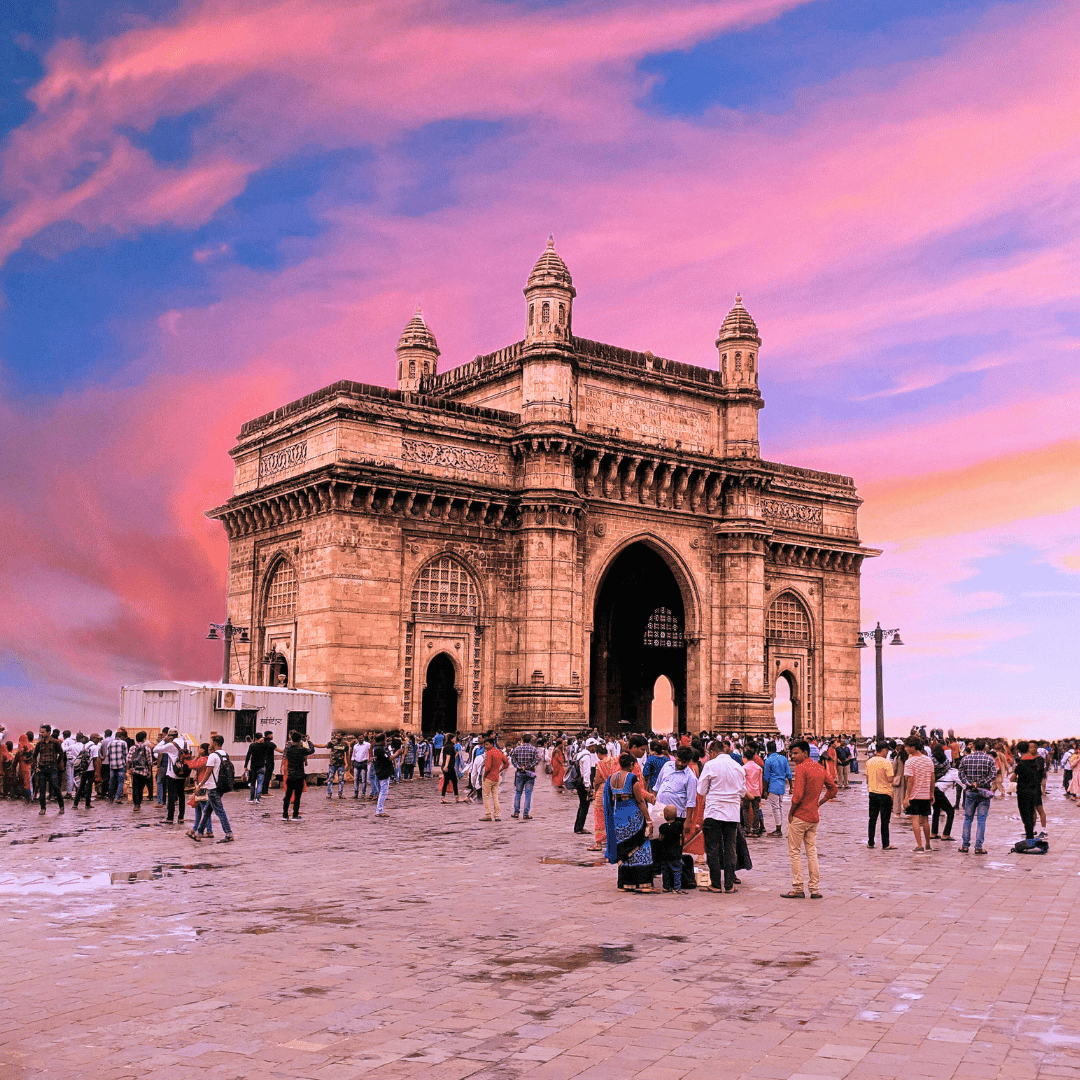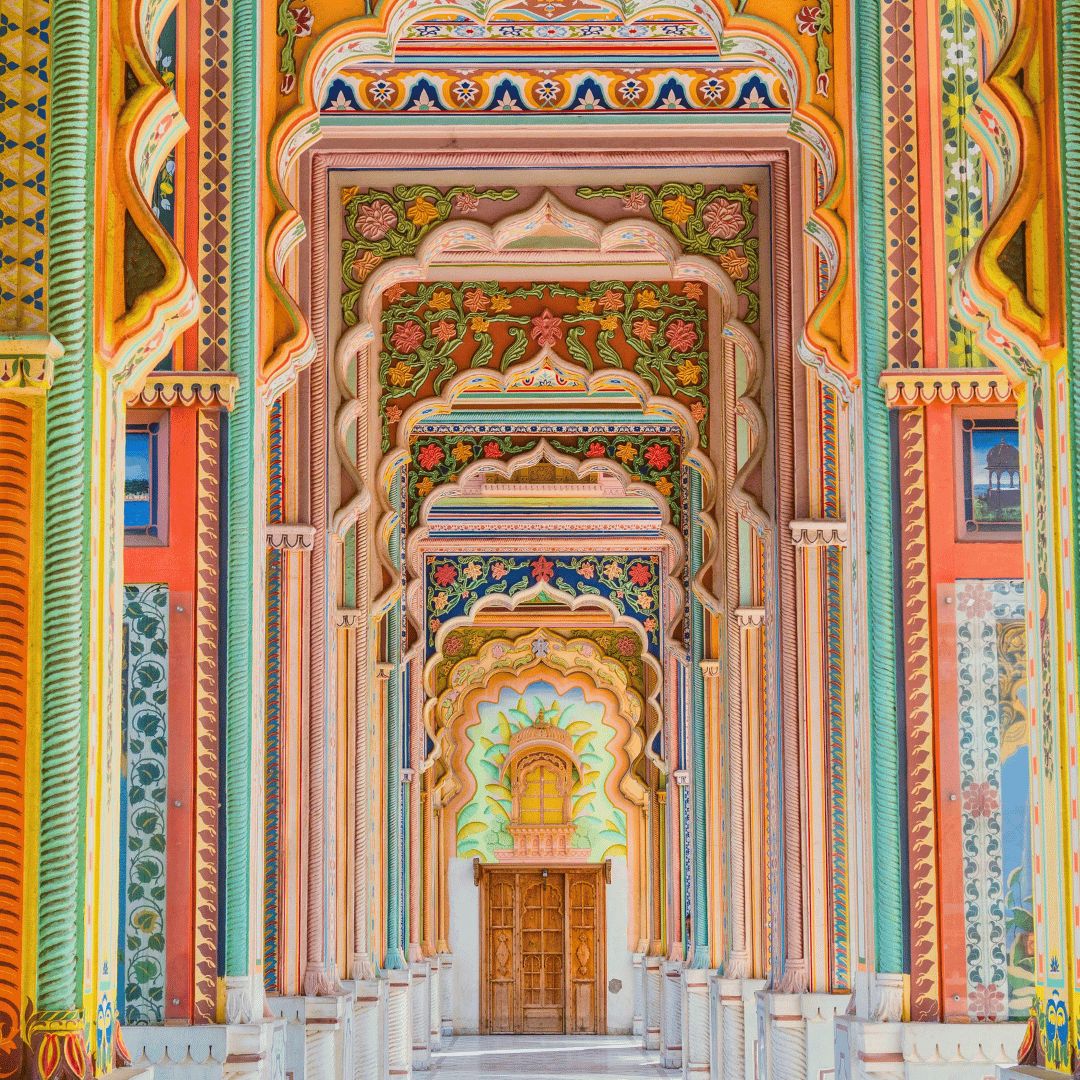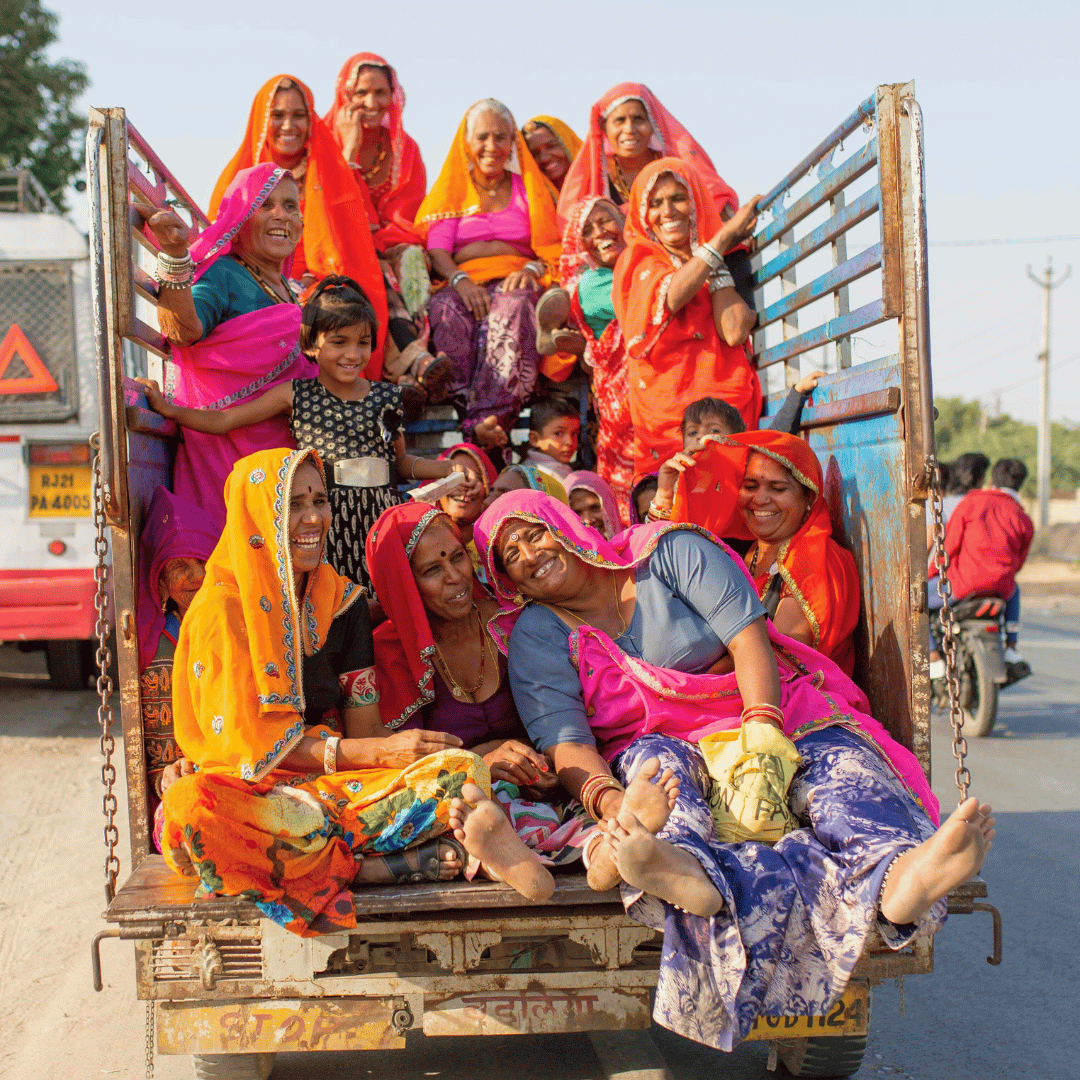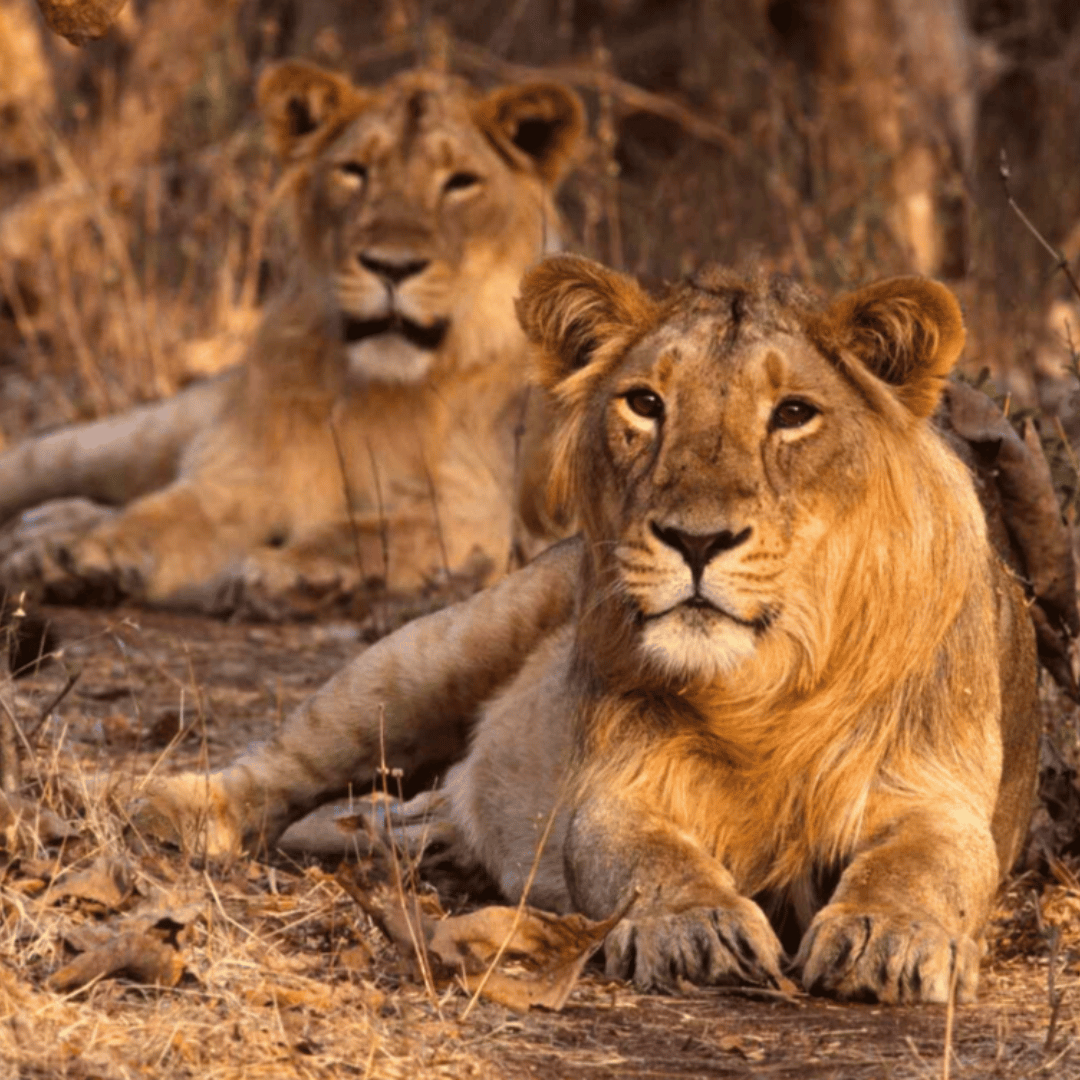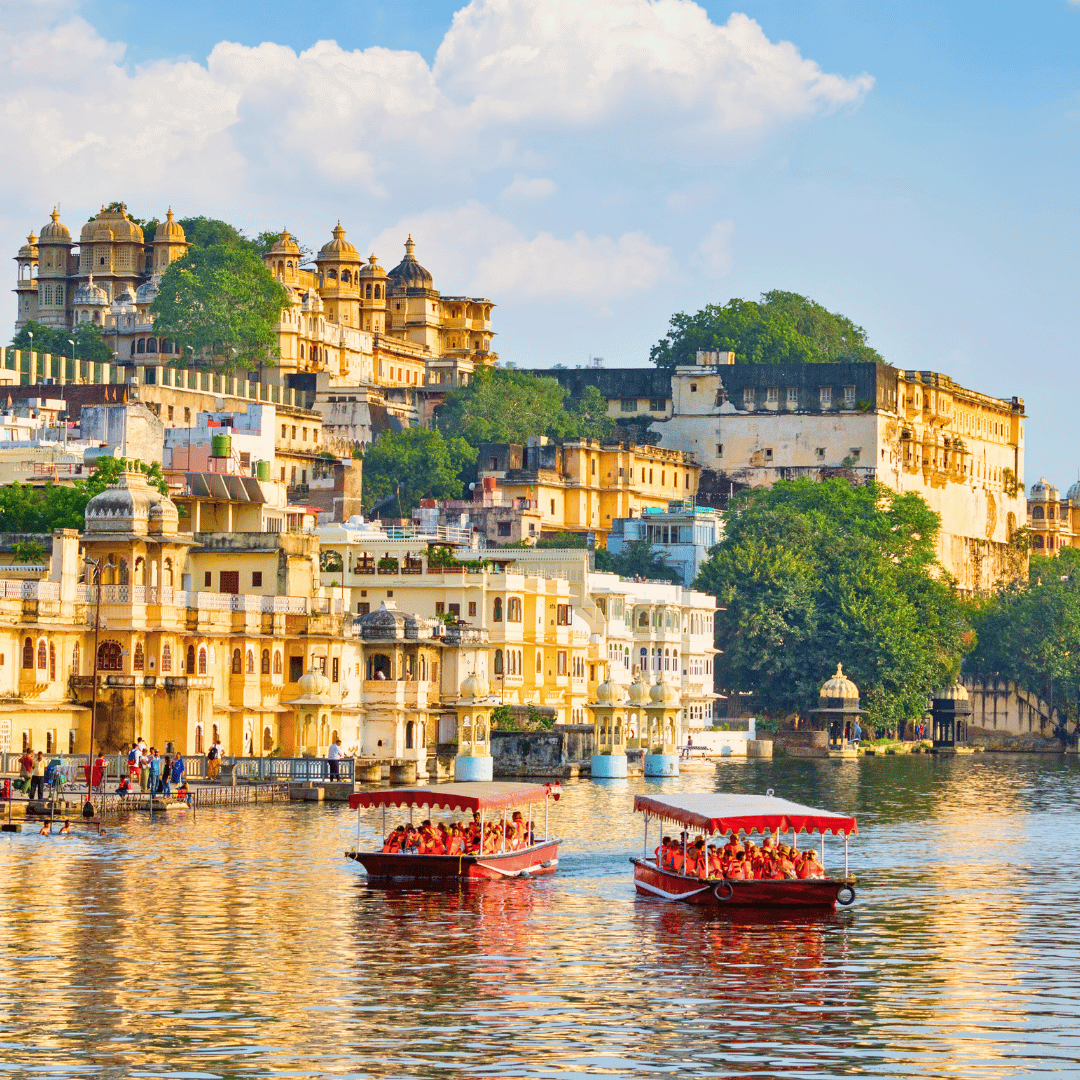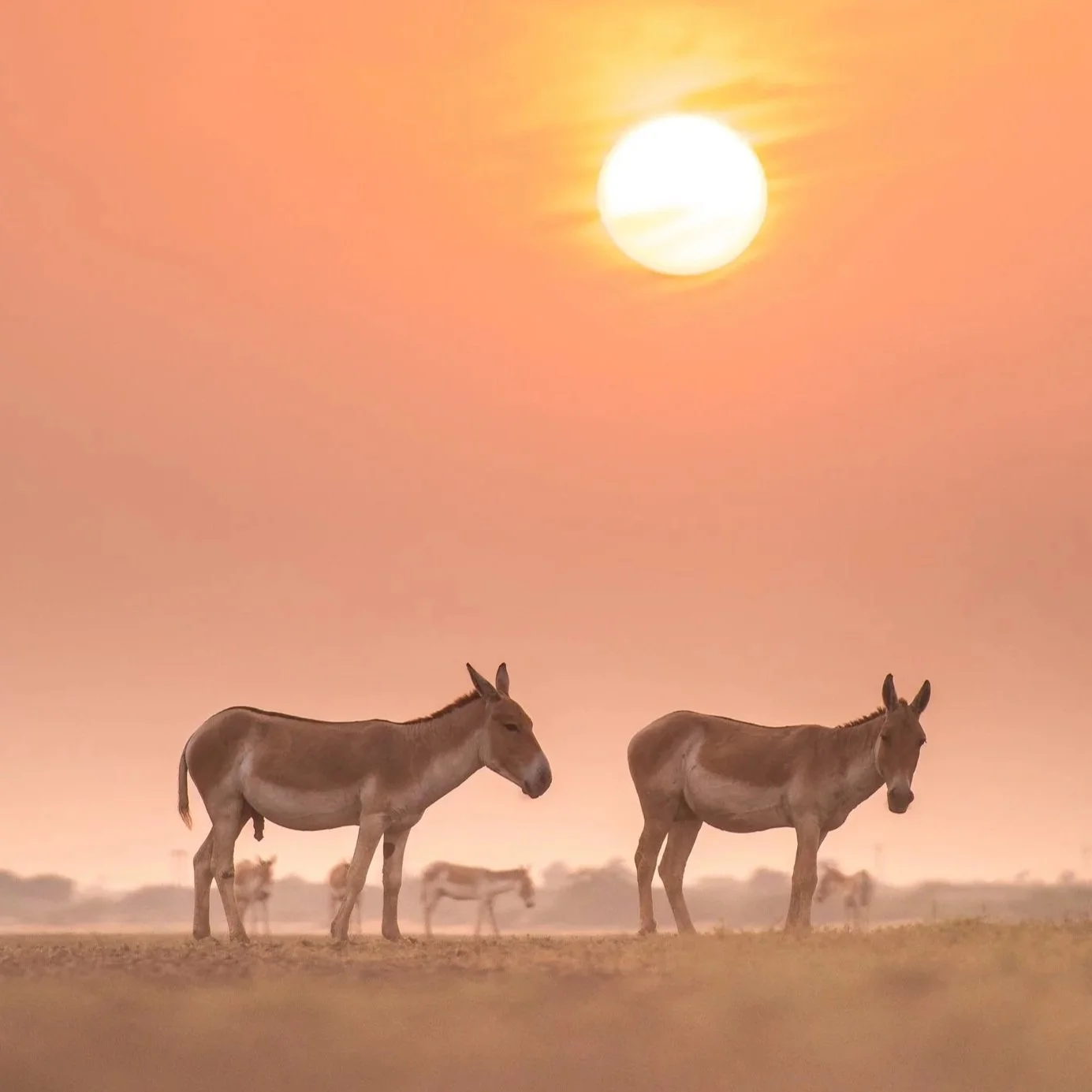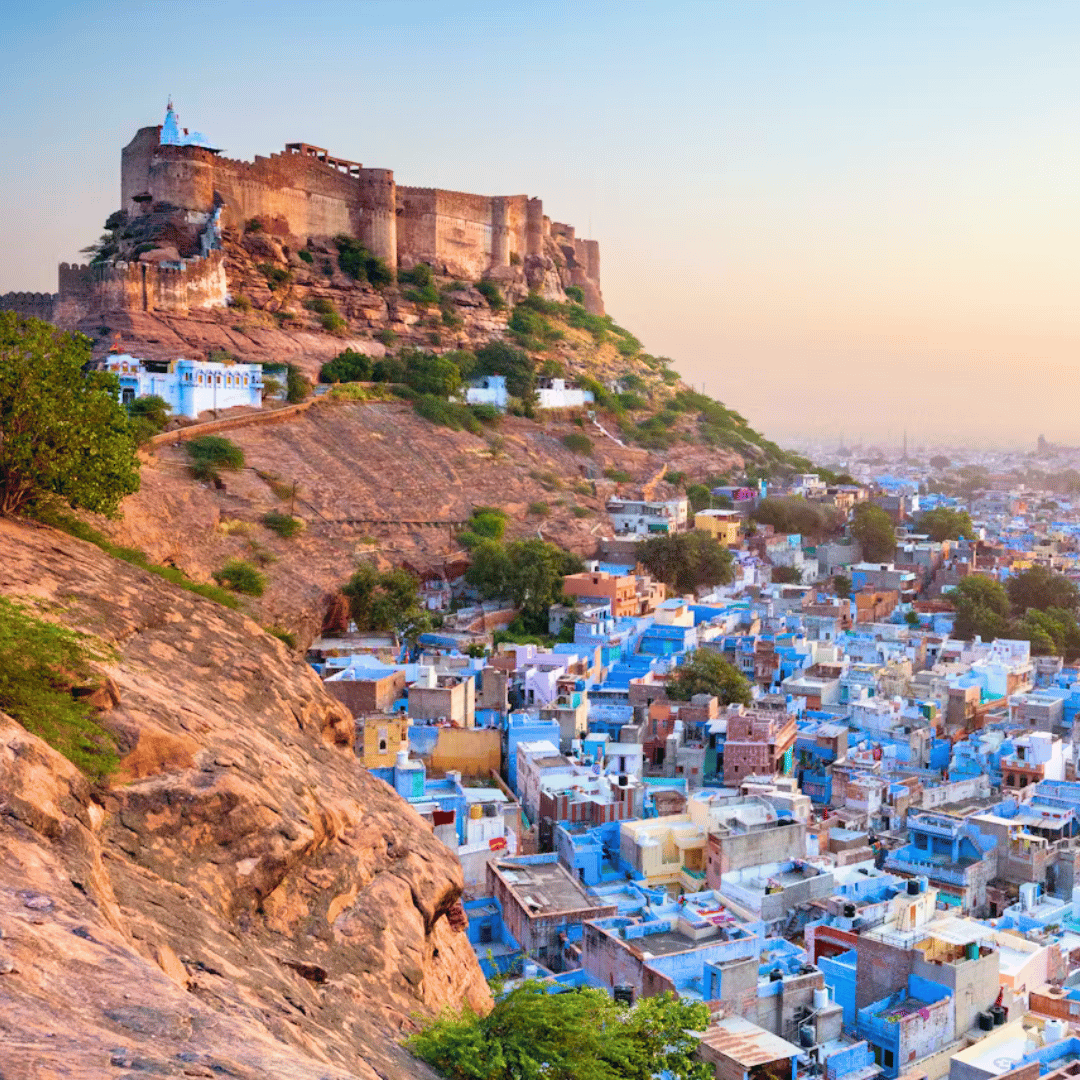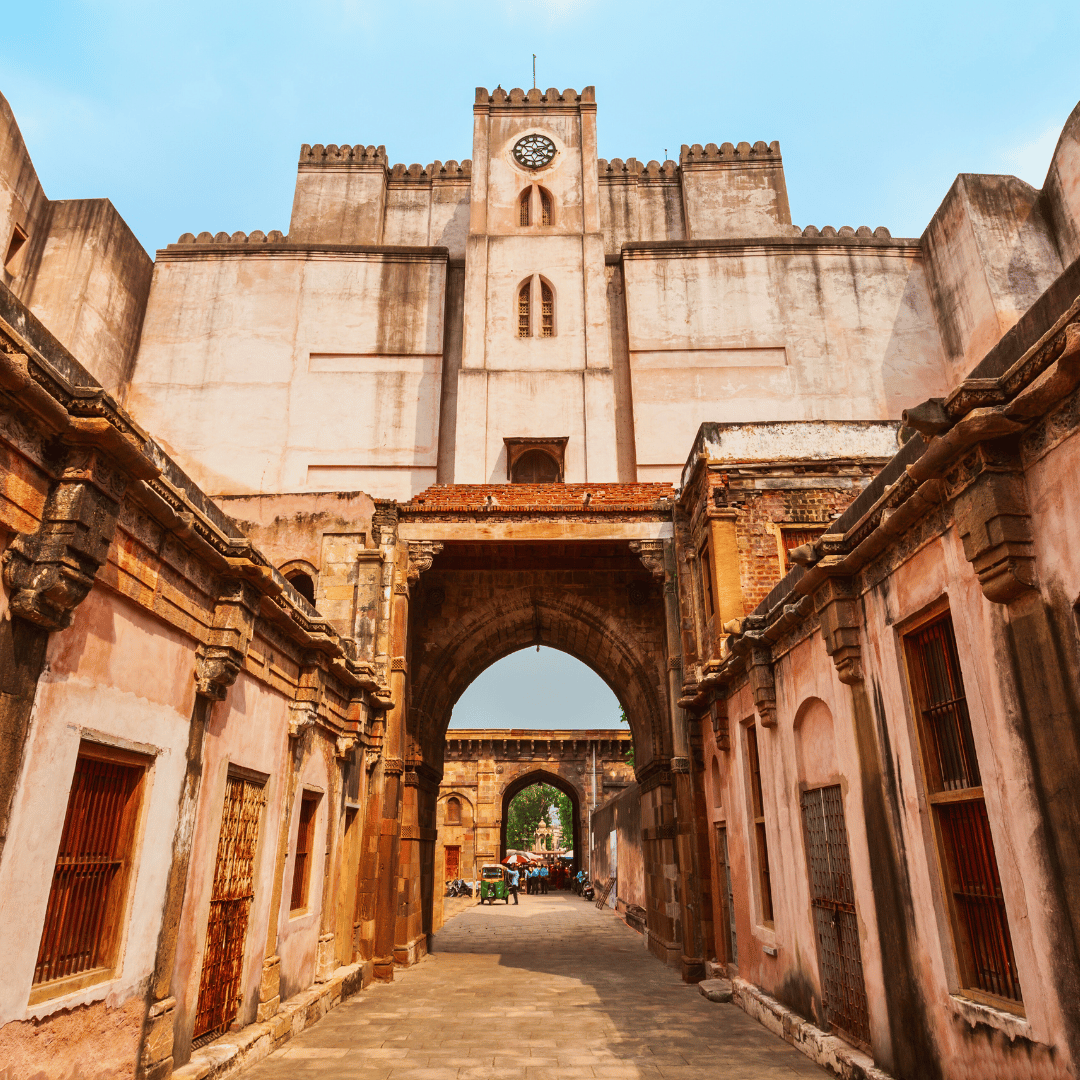
Private West India Tours
Bespoke Packages Crafted With Care
West India is a landscape of contrasts, where deserts, coastlines and royal cities reveal India’s rich history and colour. From Rajasthan’s palaces and desert forts to Gujarat’s stepwells, tribal villages and temple towns, each state tells its own story. Explore Mumbai’s colonial architecture and lively bazaars, unwind on Goa’s beaches, and travel inland to discover sacred sites such as Somnath and Dwarka. Safari through Gujarat’s Little Rann of Kutch or the jungles of Gir to see Asiatic lions, or journey into Maharashtra’s Deccan heartland to uncover the cave temples of Ellora and Ajanta.
Custom West India tours with India Unbound are designed to blend culture, heritage and coastal charm, with expert local guides, private drivers and distinctive boutique stays. Based in Melbourne and crafting bespoke India itineraries and tour packages since 2007, we create flexible and rewarding experiences for Australian travellers seeking authenticity across one of India’s most diverse regions.
Choose Your West India Travel Style
West India Travel Advice For First Time Visitors
-
West India offers one of the richest and most varied travel experiences in the country, spanning deserts, mountains, and coastline. The region includes Rajasthan, Gujarat, Maharashtra, and Goa, each with a distinct cultural identity and rhythm of life. Travelling here provides a sense of both India’s diversity and its continuity, where centuries of history and craftsmanship still shape daily existence.
Each state has its own personality. Rajasthan is known for its royal cities, ornate palaces, and storytelling traditions. Gujarat’s heritage shines through its temples, stepwells, and artisanal communities that have preserved textile and craft techniques for generations. Maharashtra combines sacred pilgrimage routes, bustling cities like Mumbai, and ancient cave temples, while Goa offers a blend of Portuguese influence and coastal charm that feels entirely different from the rest of India.
Travellers are drawn to West India for its extraordinary variety and authenticity. Few parts of the country offer such a mix of landscapes, architecture, and living traditions within one region. Rajasthan’s palaces and desert towns capture India’s royal heritage; Gujarat fascinates visitors with its craft villages, stepwells, and Jain temples; Maharashtra blends urban creativity with ancient cave art; and Goa’s coastal culture reflects a slower, more relaxed rhythm. Many visitors come seeking connection with India’s history and people rather than only its monuments. The region’s heritage hotels, local guides, and artisan communities create opportunities for genuine encounters - from learning about traditional embroidery in Kutch to joining morning prayers beside Udaipur’s lakes or exploring Mumbai’s creative districts with a local.
Local customs reflect warmth, hospitality, and deep respect for tradition. A polite greeting goes a long way, and removing shoes before entering homes or temples is expected. Many families and small communities take pride in welcoming visitors, often offering tea or conversation as a gesture of friendship. Photography is widely accepted, but it’s courteous to ask before taking photos of people or private spaces.
Healthcare standards are generally reliable in urban centres such as Mumbai, Ahmedabad, Jaipur, and Panaji, with good private hospitals and English-speaking staff. In rural or remote areas, facilities are more limited, so it’s important to carry essential medicines, travel insurance, and any prescriptions you might need. Pharmacies are common, though the quality of medications varies, so bringing your own supply is advisable.
Connectivity is improving rapidly across West India. Wi-Fi is common in hotels and cafes in cities, but smaller towns and villages can have slower or less stable connections. A local SIM card is the most practical solution, offering affordable data and coverage across most regions, even while travelling between cities.
Distances can be long, but the roads and rail networks are well developed, linking major cities and regional towns. Drivers and guides are accustomed to supporting international travellers and often share valuable insights about local customs and history. Slowing the pace of travel allows you to appreciate regional differences, from desert forts and salt plains to coastal markets and sacred rivers, revealing the layers that make West India so distinctive and rewarding.
-
West India covers a vast and culturally rich area of the subcontinent, home to some of India’s most distinctive states. Each offers a different experience shaped by its geography, traditions, and history, yet all are connected through deep-rooted artistry and strong regional identities.
Rajasthan is India’s largest state and the land of kings, where desert fortresses, royal palaces, and vibrant bazaars tell stories of dynasties and trade routes. Its cities each carry a signature hue and atmosphere - Jaipur’s pink sandstone façades, Jodhpur’s blue houses, Udaipur’s lakes and marble palaces, and Jaisalmer’s golden desert architecture. Beyond the major cities, smaller towns like Bundi and Barmer reveal rural life, local crafts, and enduring hospitality.
Gujarat lies to the southwest and is one of India’s most industrious and culturally diverse states. It is the birthplace of Mahatma Gandhi and home to thriving artisan communities that keep alive traditional weaving, embroidery, and block-printing techniques. Travellers visit for the remarkable Jain temples of Palitana, the salt flats of the Rann of Kutch, the wildlife of Gir National Park, and the stepwells and heritage towns that illustrate centuries of architectural innovation.
Maharashtra offers a striking contrast of landscapes and lifestyles, from the megacity of Mumbai to the sacred ghats of Nashik and the ancient Buddhist cave temples of Ajanta and Ellora. Its western coast is dotted with forts and fishing villages, while inland regions are rich in Maratha history and hilltop citadels. Maharashtra also has a growing reputation for art, design, and food, blending heritage with contemporary creativity.
Goa is India’s smallest state but has a cultural influence far greater than its size suggests. Its Portuguese colonial past is reflected in whitewashed churches, baroque architecture, and a distinctive cuisine. Goa’s appeal extends beyond its beaches - travellers explore its spice plantations, local markets, and inland villages where Catholic and Hindu traditions coexist harmoniously.
In addition to these four states, Dadra and Nagar Haveli and Daman and Diu, now a combined union territory, share many cultural and geographic traits with Gujarat and Maharashtra. Together, these regions form what is broadly known as West India
-
West India is a region of remarkable linguistic diversity, shaped by centuries of trade, migration, and cultural exchange. While Hindi and English are widely understood, every state has its own main language that reflects its history and local identity. Travelling through this part of India offers the chance to hear a variety of sounds and dialects, each carrying its own rhythm and character.
In Rajasthan, most people speak Rajasthani, which is not a single language but a group of closely related dialects such as Marwari, Mewari, Shekhawati, and Dhundhari. These dialects vary slightly from one part of the state to another but share common roots. Hindi is also widely spoken, particularly in cities and tourist areas, and English is used in hotels, shops, and by guides. In the villages and small towns, visitors will often hear lively conversations in local dialects that still preserve the flavour of Rajasthan’s royal and folk heritage.
In Gujarat, the primary language is Gujarati, one of India’s most expressive and historic regional languages. Gujarati has a strong literary and philosophical tradition and is spoken by nearly the entire population. In the Kutch region, people speak Kutchi, a dialect influenced by Sindhi, Gujarati, and Hindi. English is commonly used in business, education, and tourism, while Gujarati remains the language of daily life. The sound of prayers, folk songs, and markets conducted in Gujarati offers a window into the cultural depth of the state.
In Maharashtra, the main language is Marathi, which has one of the oldest literary traditions in India. Marathi is spoken across the state and is especially strong in the rural heartland. In Mumbai and Pune, Marathi coexists with Hindi and English, as both cities attract people from all over the country. English is widely understood in urban areas, and it is often used in schools, offices, and the tourism sector. In the countryside, Marathi remains the language of storytelling, theatre, and poetry, playing a key role in maintaining cultural identity.
In Goa, the official language is Konkani, a coastal language related to Marathi but shaped by centuries of Portuguese presence. Konkani has borrowed words from Portuguese and Sanskrit, giving it a musical tone that reflects Goa’s unique blend of Indian and European influences. Many Goans are fluent in English and often speak Marathi or Portuguese as well. English dominates in the tourism industry, while Konkani is spoken at home, in markets, and in local celebrations.
Across West India, English serves as a practical common language for visitors, while local languages reveal the depth of each community’s history and values.
-
The best time to visit West India is generally from October to March, when the weather is pleasant and the skies are clear. This period is ideal for exploring Rajasthan’s forts and desert towns, Gujarat’s heritage cities, and Maharashtra’s ancient cave temples and coastal regions. It is also when the region hosts many of its most important festivals, adding colour and cultural depth to the experience.
In Rajasthan, the season coincides with events such as the Pushkar Camel Fair, the Jaipur Literature Festival, and local fairs in towns like Jaisalmer and Nagaur. Gujarat celebrates the spectacular Navratri Festival, known for its Garba dancing, and the Rann Utsav, a cultural celebration held on the salt flats of Kutch from November to February. Maharashtra comes alive during Ganesh Chaturthi, honouring Lord Ganesha with elaborate street processions and decorations, while Goa is at its most festive during Carnival in February and Christmas in December, when music, parades, and fireworks fill the towns.
From April to June, temperatures rise sharply, especially across the desert and interior regions, making travel more suitable for early risers and those interested in visiting hill stations such as Mount Abu, Lonavala, or Mahabaleshwar. The monsoon season, from June to September, brings lush greenery to Maharashtra and Goa, transforming waterfalls and forested hills into dramatic landscapes. Although rural travel can be slower, this is a beautiful time to experience the Western Ghats and the quieter side of the coastal belt.
For most travellers, October to March remains the most comfortable and rewarding time to visit West India. It combines ideal travel conditions with vibrant festivals that reveal the region’s artistic, religious, and social spirit.
-
When travelling in West India, dressing appropriately shows respect for local culture and helps you feel comfortable in a variety of settings, from cities and temples to small villages and heritage stays. The region is generally modest in its approach to clothing, and thoughtful dress is appreciated, especially outside major urban areas.
Light, breathable clothing made from cotton or linen is best for most of the year, as it suits the warm climate and blends easily with what locals wear. In Rajasthan and Gujarat, where traditional attire remains common, travellers are often admired when they dress neatly and modestly. For both men and women, covering shoulders and knees is recommended in public places, especially in temples, mosques, or rural communities. Scarves or shawls are useful to carry, as they can be used for sun protection or as a respectful cover when visiting religious sites.
In cities like Mumbai, Pune, and Ahmedabad, dress codes are more relaxed and modern. Jeans, trousers, skirts below the knee, shirts, and tunics are widely acceptable, though revealing or tight clothing may still attract attention in smaller towns. Many visitors choose to wear locally made clothing such as kurtas or cotton tunics, which are comfortable and respectful of cultural norms.
Footwear is another practical consideration. Comfortable walking shoes or sandals are ideal for sightseeing, while slip-on shoes are convenient for places where you need to remove them before entering temples or homes. In Goa and along the coast, casual resort wear is fine for the beach, but it is courteous to cover up when away from the seaside or hotel areas.
Overall, dressing in West India is about balance - modest, comfortable, and suited to the local environment. Choosing clothes that are light, respectful, and adaptable allows you to move easily between urban streets, religious sites, and the more traditional settings that make the region so captivating.
-
Food in West India reflects the diversity of its landscapes and cultures, offering travellers a chance to experience a wide range of flavours and traditions. Each state has a distinct cuisine shaped by its geography, local produce, and history.
In Rajasthan, the cuisine evolved to suit the desert environment. It relies on grains, pulses, and preserved ingredients rather than fresh vegetables. Dishes such as dal baati choorma, gatte ki sabzi, and ker sangri are local favourites. For meat lovers, laal maas, a fiery mutton curry, is one of the state’s signature dishes. Snacks such as kachori, samosa, and mirchi bada are also common in markets and roadside stalls.
In Gujarat, food is predominantly vegetarian and known for its balance of sweet and savoury flavours. A traditional Gujarati thali offers a complete meal with small portions of dal, vegetables, pickles, roti, rice, and sweets. Popular dishes include dhokla, thepla, undhiyu, and khichdi. Street food plays a big part in local culture, with snacks like sev puri, khaman, and fafda available throughout the state.
In Maharashtra, coastal and inland cuisines differ widely. The Konkan coast features seafood curries flavoured with coconut, tamarind, and kokum, while inland areas favour spicy vegetable dishes, lentils, and flatbreads such as bhakri. Mumbai’s street food scene is legendary, with pav bhaji, vada pav, and bhel puri among the most popular choices. Poha and misal pav are common breakfast dishes, and Maharashtrian sweets such as puran poli are widely enjoyed during festivals.
In Goa, the cuisine blends Indian and Portuguese influences. Fish and seafood feature heavily, often cooked with coconut milk, vinegar, and spices. Goan fish curry, prawn balchão, and vindaloo are iconic dishes that showcase this fusion of flavours. Rice and bread are staples, and desserts such as bebinca and dodol are local favourites.
Across West India, travellers will find plenty of vegetarian and non-vegetarian options, as well as regional variations in spice levels. Trying local thalis, visiting bustling food markets, and sampling traditional sweets or street snacks are all part of the experience of exploring this region through its food.
-
The amount of time you spend in West India depends on your interests and how deeply you want to explore each state, but most travellers find that around three to four weeks allows for a well-paced and immersive journey. This length gives you time to travel between regions without constant one-night stops, leaving space to slow down, enjoy each destination, and experience the local rhythm of life.
If you have 10 days, focus on one state or a specific theme rather than trying to cover too much ground. Rajasthan’s palaces and desert towns can easily fill this time, as can Gujarat’s craft villages and heritage cities or Goa’s beaches and Portuguese architecture. Ten days allows for two- and three-night stays in each location, avoiding rushed travel days.
With two to two and a half weeks (14 to 17 days), you can comfortably explore two neighbouring states or combine contrasting landscapes. Travellers often pair Rajasthan and Gujarat for a mix of desert heritage and artisan culture, or Maharashtra and Goa for history, wildlife, and coastal relaxation. This duration makes it possible to enjoy scenic drives, include national parks, and spend longer in character-filled hotels or homestays rather than moving on every night.
A three to four-week itinerary is ideal for those wanting to experience West India in depth. Travelling overland from Delhi or Mumbai, you can journey through Rajasthan, Gujarat, and Maharashtra, with time to linger in smaller towns like Bundi, Bhuj, and Gondal. You’ll have flexibility to explore the Ajanta and Ellora caves, the salt flats of Kutch, and the royal cities of Jaipur and Udaipur without feeling hurried. Longer trips also allow for spontaneous detours, village visits, and unhurried days at heritage properties.
Ultimately, spending more time in West India turns travel into discovery rather than transit. By avoiding constant one-night stops, you’ll gain a deeper connection to the places you visit and have the freedom to experience the region’s diverse landscapes, people, and traditions at a natural, enjoyable pace.
Popular Destinations In West India
Create Your West India Tour With India Unbound
Established in 2007, India Unbound is an award-winning travel company specialising in custom-made journeys and private tours to India. With more than two decades of experience exploring this fascinating nation, we create tailor-made itineraries for discerning travellers looking for a real adventure.
When you start to research a trip to India, it’s easy to feel overwhelmed by the seemingly endless possibilities. At India Unbound, we’ve made this process easy. To see India, we simply need you to tell us relevant information about yourself and the type of travel experience you are looking for - whether it’s a wish list of places you want to visit, a style of travel, a particular interest or theme that you want to explore, or all of these factors. Using this information, we curate a custom-made India private tour just for you. It’s that simple.
West India Hotel Recommendations


